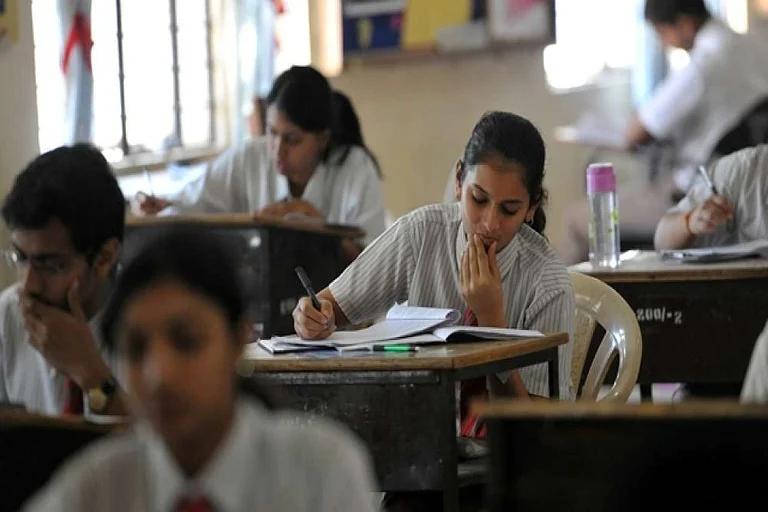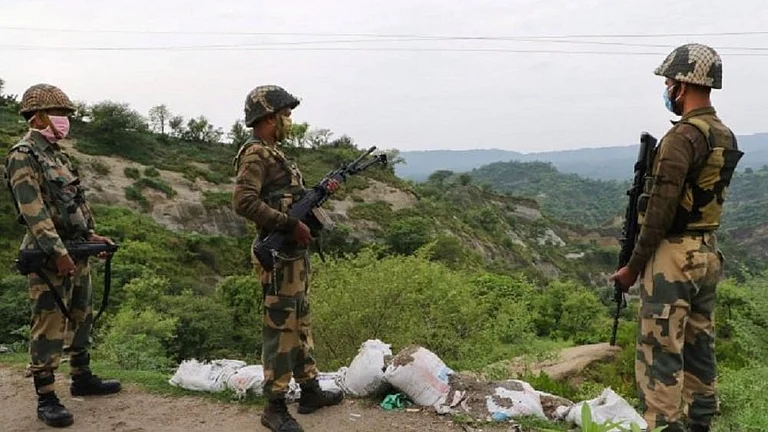For Vishal Kumar, 19, the youngest of the 41 rescued workers, the 17 days spent inside the Silkyara-Barkot tunnel felt like an unwritten death warrant. It was a close shave, an ordeal of the worst kind for someone who is just 19—an experience that, in his own words, is now permanently etched in his memories. It was like a bad dream.
It took a lot of efforts on the part of the administration, and prayers, to pull the trapped workers out of the collapsed tunnel, given the scale on the tragedy and the fragility of the mountains in the region. It’s been a few days, and it’s only now that the rescued workers have had the time to reflect on the tragedy.
“The first few hours were frightening. The debris were constantly falling, leaving no chance to escape. The rubble completely blocked the exit. Being trapped inside was traumatic. I told myself, maybe it’s all going to end at 19,” recalls Kumar, who is back in his home in Bhangot village in Mandi district of Himachal Pradesh.
When the landslide happened early in the morning on November 12, on the day of Diwali, there was complete chaos and confusion. Everyone was shaken seeing the amount of debris—it was almost a 45-60 meter tall pile. The scariest bit was that the oxygen supply also got blocked due to the huge mountain of rubble, recalls Kumar.
“Those agonising moments can’t be described. I had started working at the tunnel only a month before the collapse happened, so I felt completely helpless. There were a few senior and experienced workers, who instructed us to move away from the loose debris and find a cover to be safe,” says Kumar.
The senior workers broke the pipe that was used to drain water and used it as an oxygen supply. This gave hope to the other workers who feared getting suffocated inside the tunnel.
For the next 36 hours, the workers survived only on oxygen, water and bare minimum resources, until people outside realised they were alive and needed help.
“In the initial hours, we survived on murmura (puffed rice), popcorns and chickpeas that were supplied through a small pipe from the outside. Thankfully, water was available. We slept in the freezing cold on the wet floor. The geo-tex polyester roll came in handy. We cut it in sheets with gas-cutters. We spread it on the ground and also used it as a mattress. We sat in huddles to keep ourselves warm,” recalls Kumar.
For nine days, until the six-inch “life-line” pipe was laid to supply food, medicines, drinking water and few basic necessities, the workers had no means to even to brush their teeth, wash and change clothes.
Due to use to heavy machines being used to rescue them, cracks started appearing inside the tunnel which kept widening as time passed. The workers could feel the vibrations and loose debris was constantly falling. The spot they had chosen to huddle and sleep, was relatively save, but they feared it would get covered with debris. There was electricity supply line working, so the tunnel was well-lit.
The workers, however, were getting anxious as they had no clue for how long the rescue would go on.
“We swung between hope and despair as the rescue operation faced several setbacks. But we were confident that the rescue workers would manage to save us through the pipe, if not today, then tomorrow, or the day after,” says Kumar.
To keep the morale up, the trapped workers formed small groups of five to six and played games they would play as kids. They made cards of paper sheets, torn from the blank log books. The most favourite games were raja-rani and chor-sipahee. On some days, when fatigue took over, they slept for 18 hours.
They had their mobiles, but there was no signal inside. “We kept the mobiles switched off to save batteries. They, however, were very useful when we had to know whether it’s day or night outside,” says Kumar.
After 12-13 days, many workers started feeling weakness in the muscles and limbs. They started practicing yoga and would go on small walks. But the mind was restless. Anxious parents and families waiting outside for days were other reasons of worry. The confinement inside the tunnel—a closed, dark space—was the biggest agony they all lived through.
Some of the younger workers were worried about no access to a proper toilet and hygiene. But two senior foremen—Sabah Ahmed and Gabbar Singh—found a way out. They told the workers to identify safe spots at a distance and use those as temporary toilets. The entire stretch was two kms long, so they could identify some pits, which they would cover with soil. “Since there was no soap to wash hands, we used the traditional practice of cleaning hands by rubbing them with soil,” says Kumar. Later, the workers were provided with soap and towel through the six-inch pipe.
Spending time inside the tunnel was challenging yet it was a kind of community feeling that helped them to overcome the negative thoughts. The communication between the workers mostly revolved around home, conditions back home, like poverty, the lack of education and health facilities. Some workers talked about their families, aging and ailing parents and children to get over the feeling of anxiety.
“In those moments, I remembered how my mother Urmila Devi, a low-paid health worker in a nearby government hospital, saved money for my education. I knew my family couldn't afford further studies, so I dropped out and came to Rishikesh to take-up a machine job with a private firm executing tunnelling work for the Rishikesh-Karanprayag railway line. I was barely 17 and worked there for two years,” says Kumar.
Only a month back, the contractor shifted him to Silkyara tunnel where his elder brother Yogesh was already working.
On the day of the accident, Yogesh was not on duty. He had gone home to celebrate Diwali with parents. Had he not gone home, both the brothers would have gotten trapped in the tunnel, and the pain of their parents would have been more intense.
For Kumar, the tunnel was a means of livelihood, but after the incident, he feels vulnerable and horrified. “Now, whenever I close my eyes, those voices, the sound of drilling machines and the visuals of collapse hover before my eyes. It’s my second birth. This experience will keep flashing in my memory for a long, long time. I will not go back to the tunnel again. I will find a job in the village, or closer to home.
Nevertheless, Kumar says he is indebted to the team of rat-miners who finally did what the machines and technology could not. “When they entered the tunnel, we screamed with joy. We hugged them and lifted them on our shoulders. They proved to be our saviours,” says Kumar.
The family lives in a two-room house. They don't have a TV. When the entire nation was watching the last leg of the rescue operations on TV, his mother says she saw the pictures of her son being hugged by the Uttarakhand Chief Minister Pushkar Singh Dhami on social media. His father Dharam Singh and brother Yogesh Kumar camped outside the tunnel for 15 days while all these 17 days, she kept praying to God for his safe return. Inder Singh Gandhi, the local MLA, reached-out to the family the day Kumar arrived to a warm welcome by the villagers. For him, the bad dream has ended.


























